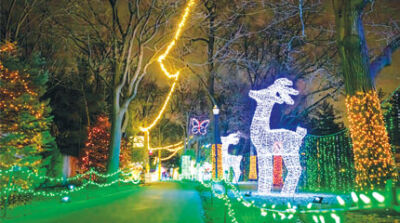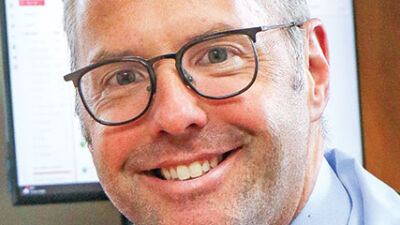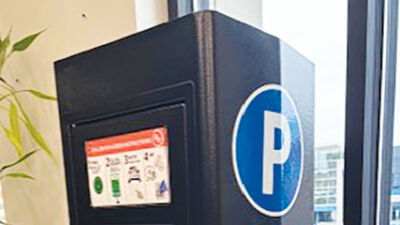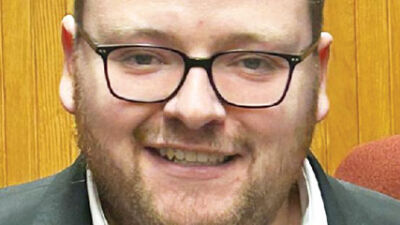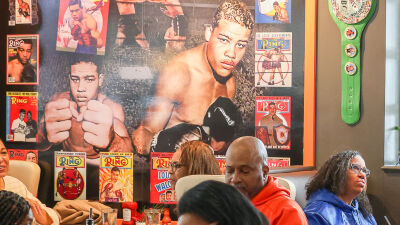CLAWSON — An online survey taken in the fall of 2023 logged the feelings and opinions of Clawson residents.
Joe Tangari, principal planner of Giffels Webster Community Planning Co., conducted the survey and presented some of its findings to the Clawson Planning Commission Jan. 23.
The presentation covered half of the information of the survey because there was a lot gathered. Tangari will present the remaining part of the survey at the next Planning Commission meeting at 7:30 p.m. Feb. 13 at 425 N. Main St.
Tangari said he believes that the information found from the survey is typical of the southeastern Michigan communities for which he has done surveys during his career.
“People do seem to like where they live, and they’re proud of their communities, but they also have certain anxieties about changing of pace and changing of the community,” he said.
Three hundred seventy-five people contributed to the survey, having answered a series of questions that ranged from general information to written responses.
According to Tangari, the average age range was 35-54 years old. The majority of homes did not have children, with 260 respondents saying that they had no children under the age of 18 living in their homes.
Word clouds were used to give respondents a way to show the positive and negative aspects or feelings about Clawson.
A word cloud is used to display different words or phrases that are typed into a response box, and the words that look the biggest within the cloud are the ones that were listed more times by responders.
In the positive word cloud, the top words displayed were “small,” “community,” “safe,” “walkable” and a few more.
“We got a lot of answers pointing out that we are close to a lot of things or well positioned to I-75 or Woodward,” Tangari said. “In all of the communities I’ve worked on in southern Oakland County, that’s a pretty common thing.”
Tangari did say that these are very general answers, so “small” could be related to the geographic size of Clawson and the small-town feel of Clawson.
“The word cloud is an analytical tool for when you have a large amount of qualitative responses for people to give their thoughts in short phrases or individual words,” he said. “It can call your attention to things that are on people’s minds.”
The results are also documented as raw numbers, so it is possible to see the different things people had said exactly.
“In general, people kind of point to that small-town community and safety; they like that we have a core and a downtown,” he said.
The biggest words listed as Clawson’s biggest challenges were “infrastructure,” “roads,” “taxes,” “schools” and others.
“Infrastructure” and “roads” dominated the word cloud, according to Tangari, which to him did not come as a surprise.
“They seem to largely reflect things that we’ve heard over the years,” he said.
“Schools” is another word that is bigger than the rest.
“From the collective responses, it’s hard to tell what is meant by that — if it’s talking about the quality of the schools or the fact that the district has shrunk. I have to dig a little deeper to see if I can figure out if there is a theme or overall tenor to people mentioning that,” Tangari said.
The question following the cloud is “How do you feel about paying for improvements to public infrastructure?”
A total of 35% of respondents answered, “I am willing to tolerate slower progress in exchange for taxes remaining the same.”
Next, 32% of respondents said they are willing to pay for more progress, and 31% said they feel they already pay too much and are not willing to pay more.
“When the city, primarily council, is dealing with that in the future, that’s a tension they have to navigate,” Tangari said. “People are unsatisfied with the state of our infrastructure, but also have some resistance to paying additional money to accelerate the repair and maintenance of the infrastructure.”
Respondents were also asked how likely it is for them to speak highly of Clawson. Out of 374 respondents, 200 said that they are very likely to speak highly of Clawson.
Tangari said that this survey information is important to the city.
“I think that hearing what people told us gives us something to build on when we think about how we are going to do things in the future,” Tangari said.
In all, 208 of 367 residents also reported that they hoped Clawson will begin to improve or maintain the sidewalks.
Planning Commission member Erin Redmond said that sidewalks need improvement.
“In terms of walking and safety, there are a lot of issues just being able to walk around downtown,” Redmond said.
Of the survey respondents, 42.78% said that amenities such as trash cans, benches and more would improve walkability.
“People don’t want to walk on just bare roads; they want something around it that makes it feel like a place,” Tangari said. “I found it really interesting that this one was really high.”
“More street trees and landscaping” was the third-highest answer, and Joshua Solomon, of the Planning Commission, wondered why this was one of the higher-rated answers.
“One, it makes a place feel less harsh to have that around,” Tangari said. “There is a shade element — you get more relief from the sun in the summer — and there is a little bit of a sense of enclosure that trees create as well.”
“We can’t do a lot with benches and trash cans, but we can look to have more green space. That’s helpful information,” Solomon said.
Crosswalks were favored by 19.35% of the survey pool, and Tangari mentioned that there are many ways to make this a possibility.
“There’s probably things we can look at even in neighborhoods that have a four-way stop that people roll through. Painting a crosswalk might be enough of a reminder to spend a little time and stop,” he said. “It’s kind of amazing the psychological impact some very simple interventions can have.”
Slightly more than 70% of respondents said that they run or walk to get exercise, and 37.33% said that they walk or ride a bike to run errands.
“That’s pretty good for the United States of America; we have a lot of communities where that percentage is way lower,” Tangari said. “That speaks to the urban form of clawson and the fact that it is a more historical community.”
 Publication select ▼
Publication select ▼

